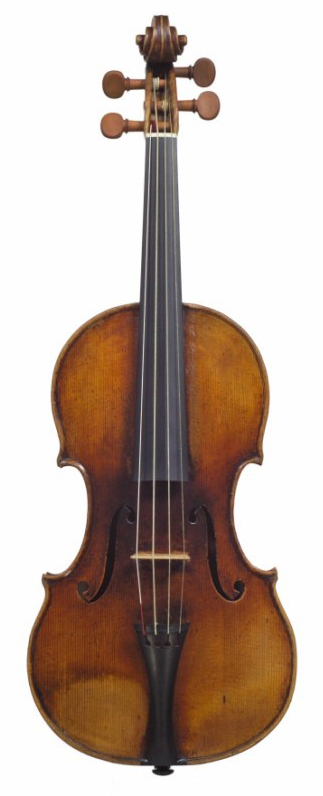
Click here to view image
Il Cannone
Paganini, Niccolò 04/07/1851 Genova - legato
Bartolomeo Giuseppe Guarnieri, called del Gesù (Cremona, 1698 - 1744)
PB820
Unità di misura: mm; Varie: misura laterale diapason: 198; Unità di misura: mm; Larghezza: 206; Lunghezza: 353; Varie: parte inferiore; Unità di misura: mm; Larghezza: 111; Varie: parte centrale; Unità di misura: mm; Larghezza: 167; Varie: parte superiore
legno intagliato
Paganini Rockstar - Palazzo Ducale, Genova - 19/10/2018 - 10/03/2019
A specially set up room in Palazzo Tursi is dedicated to Niccolò Paganini (1782-1840), since the celebrated Genoese violinist and composer by will wished to bequeath to his hometown “so that it may be perpetually preserved” his favorite instrument, what he had nicknamed “my violin cannon” because of the fullness of its sound, while other heirlooms of the artist have been added over time through the generosity of heirs or by other means. The Cannone, built in Cremona in 1743 by luthier Bartolomeo Giuseppe Guarneri, known as “del Gesù” because of the cross traced next to his signature on the musical instruments he made, was probably given to Paganini in 1802, in Livorno, Italy, and immediately became an exceptional partner for the virtuosities of the musician who, thanks in part to the extraordinary extension of the fingers of his left hand, developed new violin techniques by exploiting the full potential of that instrument. When Paganini had to have it repaired by the Parisian luthier Jean-Baptiste Vuillaume (1798 -1875) in 1833, the latter also made a copy, which he gave to the musician, who in turn, seven years later, made a gift of it to his best pupil, the Genoese Camillo Sivori (1815 -1894) who, emulating the master, bequeathed it to the City of Genoa upon his death (it is also on display in the same room). However, the Cannon is intact in its main parts, and the varnish is still the original one so much so that, at the end of the soundboard, it bears the mark of Paganini's use since, like all his contemporaries, he played without using the chin rest, that is, resting his chin directly on the instrument. In addition to distinguished violinists, playing the Cannon is the responsibility of the winner of the 'Paganini Prize' International Violin Competition. In addition to the two violins mentioned above, the room also displays one of Paganini's music stands, some of his autographs, a chessboard of him and its pawns, his effigies and other mementos.




